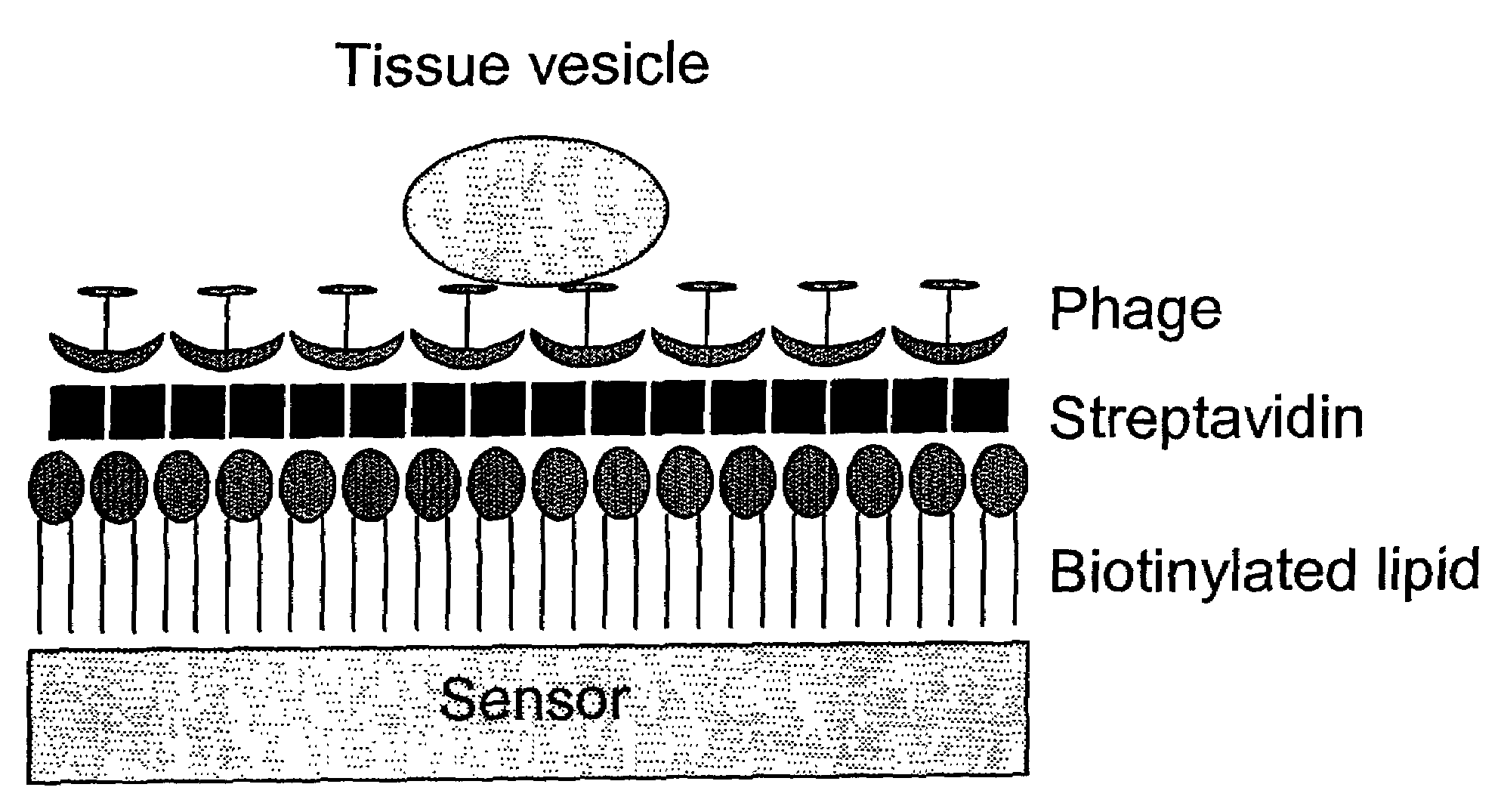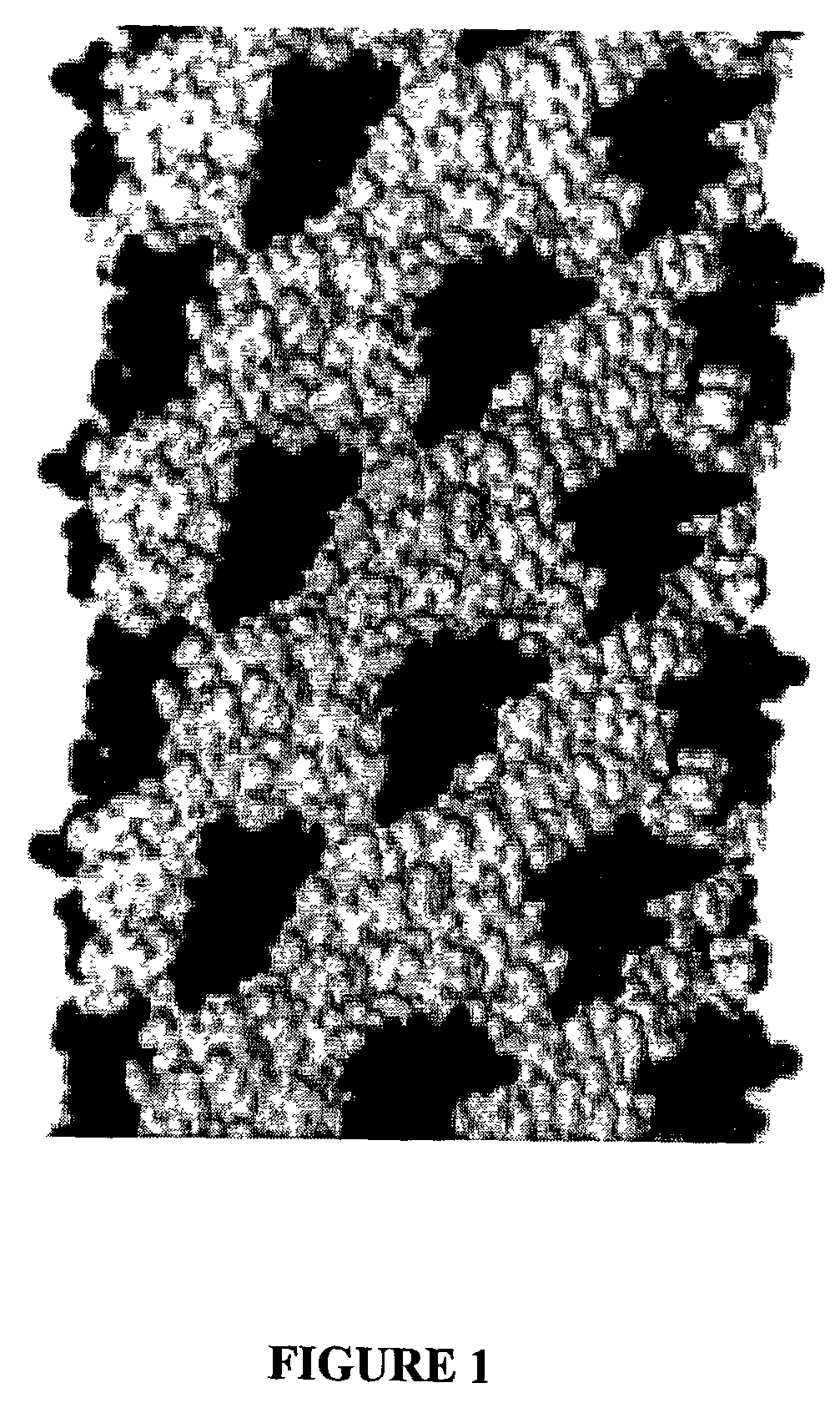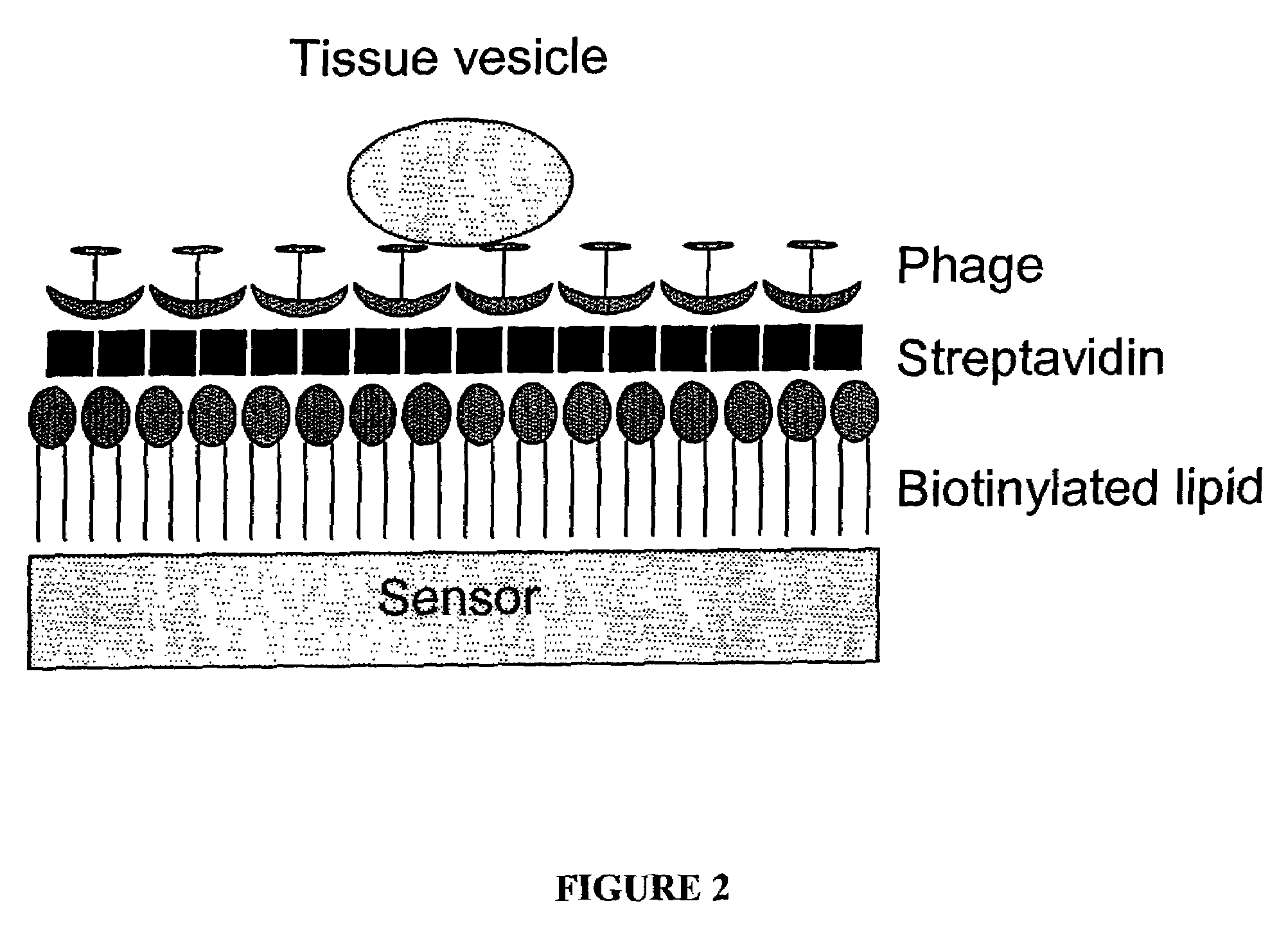Phage ligand sensor devices and uses thereof
a phage ligand and sensor technology, applied in the field of phage ligand sensor devices and their use, can solve the problems of limited longevity, low sensitivity, and previously reported biosensors, and achieve the effects of low yield, simple, routine steps, and efficient and convenient production
- Summary
- Abstract
- Description
- Claims
- Application Information
AI Technical Summary
Benefits of technology
Problems solved by technology
Method used
Image
Examples
example 1
PLSDs for Detection of β-Galactosidase
[0059]β-galactosidase from Escherichia coli is a tetrameric protein of identical 1,023-residue polypeptides, with molecular dimensions of 17.5-13.5-9 nm. Phage that bind to this protein and to small haptens were isolated from phage display libraries as described in Petrenko and Smith (2000) Prot. Eng. 13: 589-592. Binding of phage to the antigen was confirmed by enzyme linked immunosorbent assay (ELISA) in which the phage were immobilized on the plastic surface of the ELISA wells and reacted with their antigens in solution (see Petrenko and Smith, id.). The phage was biotinylated using commercially available reagents and standard procedures (see, e.g., 2002 catalog from Pierce Biotechnology, Inc., Rockford, Ill.).
[0060]To prepare the sensor component of the device, AT-cut planar quartz crystals with a 5 MHz nominal oscillating frequency were purchased from Maxtek, Inc. Circular gold electrodes were deposited on both sides of the crystal sensor f...
example 2
Construction of Engineered Phage Libraries
[0070]A large (109-clone) phage library was constructed by splicing a degenerate coding sequence into the beginning of the pVIII coat-protein gene, replacing wild-type codons 2-4 (Petrenko et al. (1996) Protein Engineering 9: 797-801). The degenerate coding sequence used is underlined below in Table 1:
[0071]
TABLE 1Sequence Used to Generate Phage LibraryDNAGCAGNKNNKNNKNNKNNKNNKNNKNNGGATCCCGCAAAAGCGGCCTTTGACTCC(SEQ ID NO:1)pVIII amino acid sequence A X X X X X X X X D P A K A A F D S(SEQ ID NO:2) 1 5 6 7 8 9 10 11 12 13
[0072]In the DNA sequence, each N represents an equal frequency of all four nucleotides (A, G, C and T), while K represents an equal frequency of G and T. As a result of this modification, every pVIII subunit in an engineered phage was five amino acids longer than the wild-type pVIII subunit and displayed a “random” sequence of eight amino acids, or an octamer (X8 above). In any sin...
example 3
Selection of Phage that Bind Particular Lilands
[0075]Model ligands selected for creating PLSDs were: streptavidin (from the bacterium Streptomyces avidinii), avidin (from chicken egg white) and β-galactosidase (from Escherichia coli). Each protein was absorbed to the surface of a 35-mm polystyrene Petri dish and exposed to the phage library. Unbound phage were washed away, and bound phage was eluted with acid buffer and amplified by infecting fresh bacterial host cells. After three rounds of selection, individual phage clones were propagated and partially sequenced to determine the amino acid sequence of the displayed foreign peptide. The selected phage were further characterized by enzyme linked immuno sorbent assay (ELISA) in which the phage were immobilized on the plastic surface of ELISA wells and reacted with the ligands in solution phase. Neutravidin and streptavidin were labeled with alkaline phosphatase, while β-galactosidase was unlabeled. The data (graphed in FIG. 6) demon...
PUM
 Login to View More
Login to View More Abstract
Description
Claims
Application Information
 Login to View More
Login to View More - R&D
- Intellectual Property
- Life Sciences
- Materials
- Tech Scout
- Unparalleled Data Quality
- Higher Quality Content
- 60% Fewer Hallucinations
Browse by: Latest US Patents, China's latest patents, Technical Efficacy Thesaurus, Application Domain, Technology Topic, Popular Technical Reports.
© 2025 PatSnap. All rights reserved.Legal|Privacy policy|Modern Slavery Act Transparency Statement|Sitemap|About US| Contact US: help@patsnap.com



